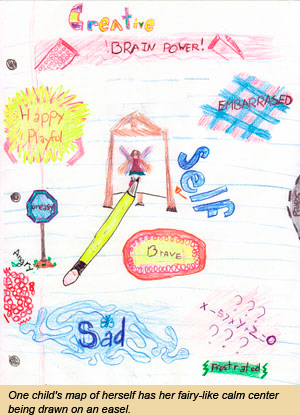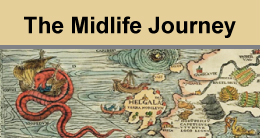Our personality is our navigation system for meeting our basic needs.
The common phrase, “So-and-so has no personality,” has no truth at all; everyone has a map,or a network of emotional roles in their personality.
We often travel to our personality “edges,” or insecurities, while facing daily life. Drawing a personality map helps us acknowledge these insecure edges instead of just feeling lost. In understanding the various personality roles we play in our lives and the roles played out in the lives of our child, we need to consider our personal sense of boundaries. Our personality map provides a kind of personality boundary, a knowing of what roles belong to our personality. All of us can benefit from the ability to detect one personality role from another, to appreciate that a person uses that role for a reason, and then to grasp how our own various roles intersect with others’ roles every day. These intersections, although, make one-interaction-at-a-time relating a challenge. Personality maps show us the intersections of our many different roles. Sometimes these role intersections cause personality traffic jams.
 We map our personality roles to differentiate these jammed roles, one from another, and perhaps most importantly, to differentiate our personality roles from self territory. By mapping or describing an inner compass that is different from our darting, ever changing, personality roles, it becomes clearer that we can access self territory whenever we want. We can use our maps to see the so-called big picture. Drawing a personality map helps enforce the idea that we can push away from busy or overwhelmed personality roles and locate self territory. This manner of being present for one interaction at a time in our relationships with other people is what seems lost when we are busy tackling life in our multi-tasking millennium. We find new eyes for a child’s behavior when we can be here now for one interaction at a time.
We map our personality roles to differentiate these jammed roles, one from another, and perhaps most importantly, to differentiate our personality roles from self territory. By mapping or describing an inner compass that is different from our darting, ever changing, personality roles, it becomes clearer that we can access self territory whenever we want. We can use our maps to see the so-called big picture. Drawing a personality map helps enforce the idea that we can push away from busy or overwhelmed personality roles and locate self territory. This manner of being present for one interaction at a time in our relationships with other people is what seems lost when we are busy tackling life in our multi-tasking millennium. We find new eyes for a child’s behavior when we can be here now for one interaction at a time.
We also draw maps to circumnavigate our way through lost byways of our personalities. When we learn to map our own missteps along the raising road of meeting our basic needs, we are in a better position to raise the next generation. Insight into our parenting fears and frustrations grows with the guidance of this homemade map. By telling stories of how our personality roles tried to handle a situation, we uncover some lost opportunities to meet certain basic needs. Our drawing also brings back a few stories we forgot about from our past trek along the raising road of learning how to meet basic needs. We can learn to acknowledge how certain roles help us meet our basic needs.
Only in growth, reform and change, paradoxically enough,
is true security to be found.
Aviator Anne Morrow Lindbergh
It Takes a Child to Raise a Parent gives directions for personality mapping. A world of introspection opens up when we draw. Ideas occur to us in new ways. Both children and adults engage in new learning when they use the nonverbal motion of drawing. Drawing brings the abstract world to hands-on awareness.For those of us accustomed to using verbal cues and our left hemispheres most of the day, art encourages exploration, a kind of map-making of Oz, or some internal place of wisdom.
— Page Top —








